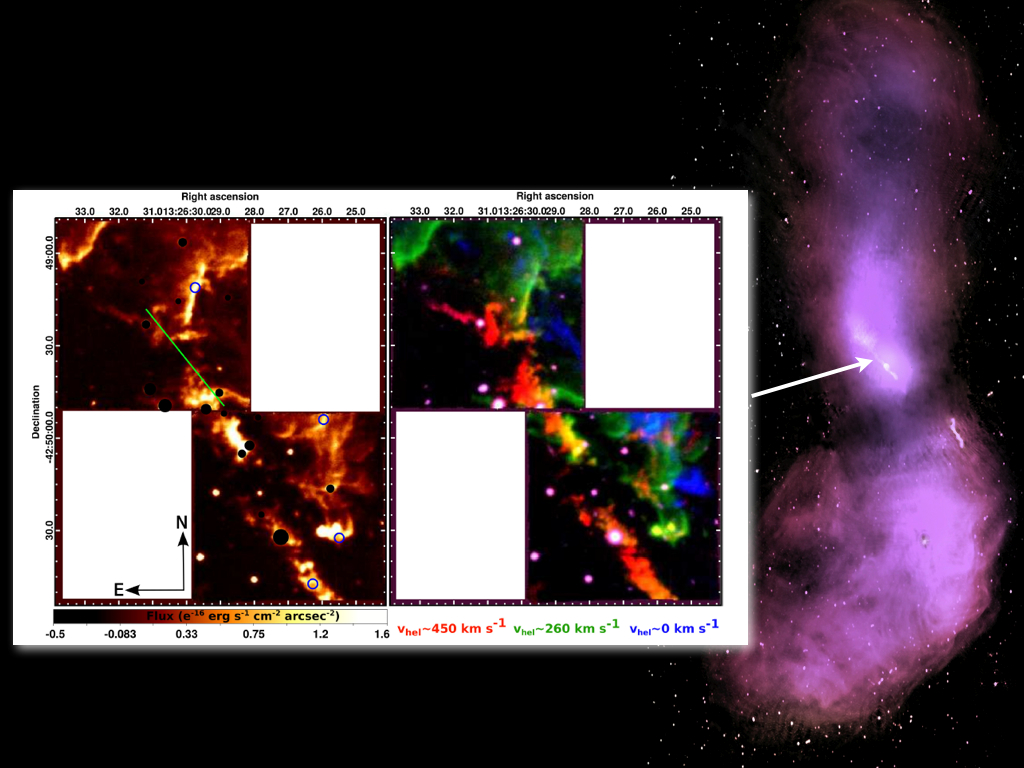Daily Image
17-02-2015The outer filament of Centaurus A as seen by MUSE
| Submitter: | Santoro, Oonk, Morganti, Oosterloo |
| Description: | Some of you may recognise the beautiful radio image of Centaurs A (figure on the right, combination of image from Feain et al. for the outer regions and from Morganti et al. for the inner part) from the wall of the SKA office in Jodrell Bank. This radio galaxy is not only great for decoration, but it is in fact a unique object for studying a number of important but still obscure phenomena. Radio-loud active galactic nuclei (AGN) are known to inject kinetic energy into the surrounding interstellar medium of their host galaxy via plasma jets. Understanding the impact these flows can have on the host galaxy helps to characterise a crucial phase in their evolution. Being the closest radio galaxy, Centaurus A is an excellent laboratory in which the physics of the coupling of jet mechanical energy to the surrounding medium may be investigated. About 15 kpc northeast of this galaxy, a particularly complex region is found: the so-called outer filament, where jet-cloud interactions have been thought to occur. In the Daily Image of 21-Jan-2015, we have shown the first results that confirm this interaction by tracing the ionised gas using VIMOS at the VLT. We have now expanded this study by exploiting the new capabilities provided by the Multi Unit Spectroscopic Explorer (MUSE) integral field spectrograph which was recently installed at the ESO/Very Large Telescope (VLT). We have used science verification time to go beyond the results obtained on a more limited area with VIMOS. The figure shows the complex distribution and velocities of the ionised gas in the MUSE pointing covering a significant fraction of the brighter gas across the outer filament. The left image shows the total intensity image. The ionised gas has a complex morphology with compact blobs, arc-like structures, and diffuse emission. The image in the middle illustrates how the gas is distributed as function of different velocities. We find signs of a jet-ISM interaction across all identified gas components. This suggests that, although poorly collimated, the large-scale radio jet of Cen A is still active and affects the surrounding gas. This result indicates that the effect on the ISM of even low-power radio jets should be considered when studying the influence AGN can have on their host galaxy. You can read more details about these findings in a paper now accepted for publication in Astronomy & Astrophysics: "The outer filament of Centaurus A as seen by MUSE" by Santoro, F.; Oonk, J. B. R.; Morganti, R.; Oosterloo, T. A.; Tremblay, G. http://arxiv.org/abs/1501.06906) |
| Copyright: | Astron |
| Tweet |  |
